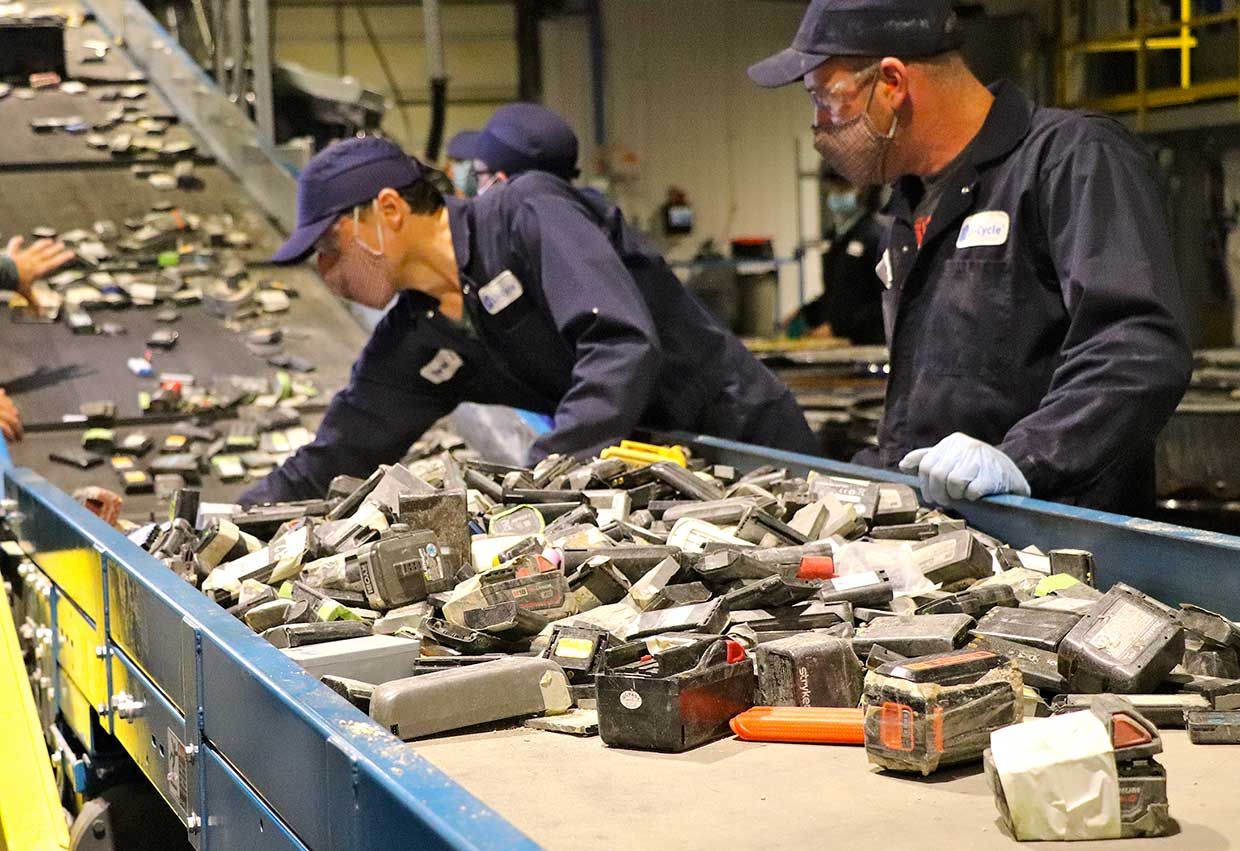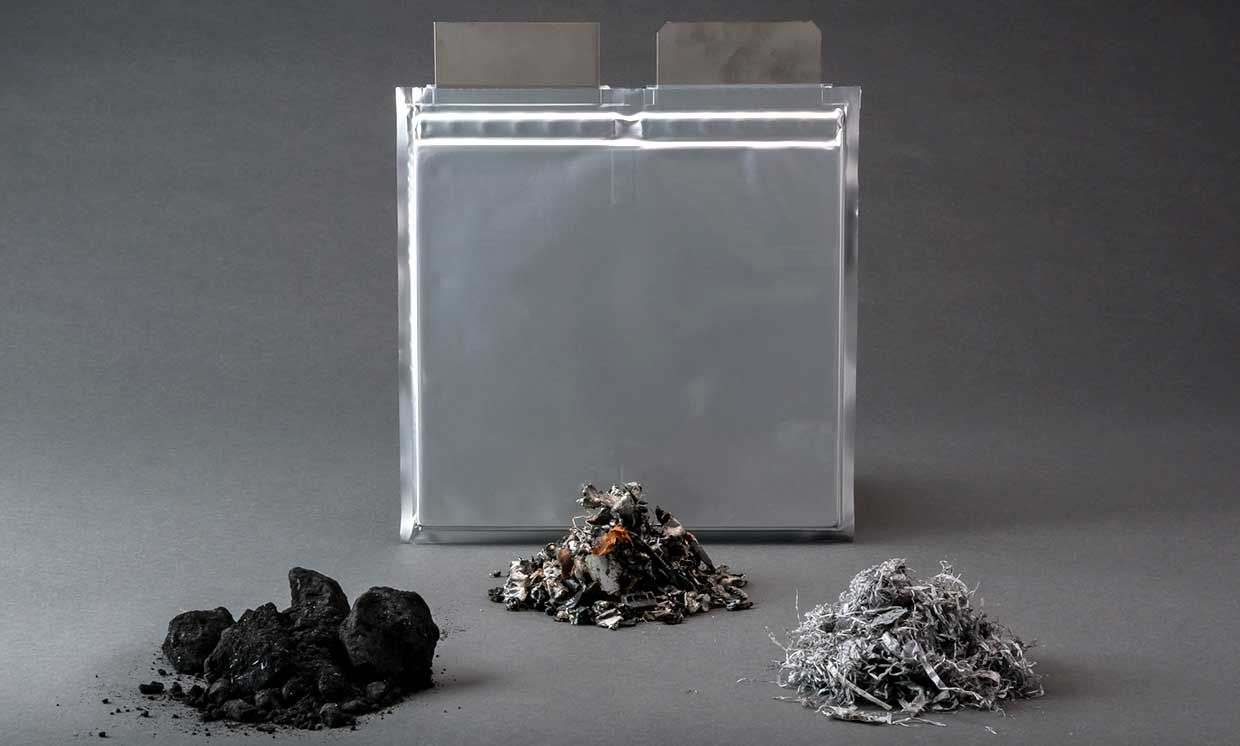

Later this year, the Canadian firm Li-Cycle will begin constructing a US $175 million plant in Rochester, N.Y., on the grounds of what used to be the Eastman Kodak complex. When completed, it will be the largest lithium-ion battery-recycling plant in North America.
The plant will have an eventual capacity of 25 metric kilotons of input material, recovering 95 percent or more of the cobalt, nickel, lithium, and other valuable elements through the company’s zero-wastewater, zero-emissions process. “We’ll be one of the largest domestic sources of nickel and lithium, as well as the only source of cobalt in the United States,” says Ajay Kochhar, Li-Cycle’s cofounder and CEO.
Founded in late 2016, the company is part of a booming industry focused on preventing tens of thousands of tons of lithium-ion batteries from entering landfills. Of the 180,000 metric tons of Li-ion batteries available for recycling worldwide in 2019, just a little over half were recycled. As lithium-ion battery production soars, so does interest in recycling.
According to London-based Circular Energy Storage, a consultancy that tracks the lithium-ion battery-recycling market, about a hundred companies worldwide recycle lithium-ion batteries or plan to do so soon. The industry is concentrated in China and South Korea, where the vast majority of the batteries are also made, but there are several dozen recycling startups in North America and Europe. In addition to Li-Cycle, that list includes Stockholm-based Northvolt, which is jointly building an EV-battery-recycling plant with Norway’s Hydro, and Tesla alum J.B. Straubel’s Redwood Materials, which has a broader scope of recycling electronic waste. [See sidebar, “14 Li-ion Battery-Recycling Projects to Watch.”]
These startups aim to automate, streamline, and clean up what has been a labor-intensive, inefficient, and dirty process. Traditionally, battery recycling involves either burning them to recover some of the metals, or else grinding the batteries up and treating the resulting “black mass” with solvents.
Battery recycling doesn’t just need to be cleaner—it also needs to be reliably profitable, says Jeff Spangenberger, director of the ReCell Center, a battery-recycling research collaboration supported by the U.S. Department of Energy. “Recycling batteries is better than if we mine new materials and throw the batteries away,” Spangenberger says. “But recycling companies have trouble making profits. We need to make it cost effective, so that people have an incentive to bring their batteries back.”

Li-Cycle will operate on a “spoke and hub” model, with the spokes handling the preliminary processing of old batteries and battery scrap, and the black mass feeding into a centrally located hub for final processing into battery-grade materials. The company’s first spoke is in Kingston, Ontario, near Toronto, where Li-Cycle is headquartered; a second spoke just opened in Rochester, where the future hub is slated to open in 2022.
Li-Cycle engineers iteratively improved on traditional hydrometallurgical recycling, Kochhar says. For instance, rather than dismantling an EV battery pack into cells and discharging them, they separate the pack into larger modules and process them without discharging.
When it comes to battery chemistries, Li-Cycle is agnostic. Mainstream nickel manganese cobalt oxide batteries are just as easily recycled as ones based on lithium iron phosphate. “There is no uniformity in the industry,” Kochhar notes. “We don’t know the exact chemistry of the batteries, and we don’t need to know.”
Just how many batteries will need to be recycled? In presentations, Kochhar refers to an “incoming tsunami” of spent lithium-ion batteries. With global sales of EVs expected to climb from 1.7 million in 2020 to 26 million in 2030, it’s easy to imagine we’ll soon be awash in spent batteries.
But lithium-ion batteries have long lives, says Hans Eric Melin, director of Circular Energy Storage. “Thirty percent of used EVs from the U.S. market are now in Russia, Ukraine, and Jordan, and the battery came along as a passenger on that journey,” Melin says. EV batteries can also be repurposed as stationary storage. “There’s still a lot of value in these [used] products,” he says.
Melin estimates that the United States will have about 80 metric kilotons of Li-ion batteries to recycle in 2030, while Europe will have 132 metric kilotons. “Every [recycling] company is setting up a plant with thousands of tons of capacity, but you can’t recycle more material than you have,” he notes.

ReCell’s Spangenberger agrees that the need for increased battery-recycling capacity won’t be pressing for a while. That’s why his group’s research is focused on longer-term projects, including direct cathode recycling. Traditional recycling breaks the cathode down into a metal salt, and reforming the salt back into cathodes is expensive. ReCell plans to demonstrate a cost-effective method for recycling cathode powders this year, but it will be another five years before those processes will be ready for high-volume application.
Even if the battery tsunami hasn’t yet arrived, Kochhar says consumer electronics and EV manufacturers are interested in Li-Cycle’s services now. “Often, they’re pushing their suppliers to work with us, which has been great for us and really interesting to see,” Kochhar says.
“The researchers involved in recycling are very passionate about what they do—it’s a big technical challenge and they want to figure it out because it’s the right thing to do,” says Spangenberger. “But there’s also money to be made, and that’s the attraction.”